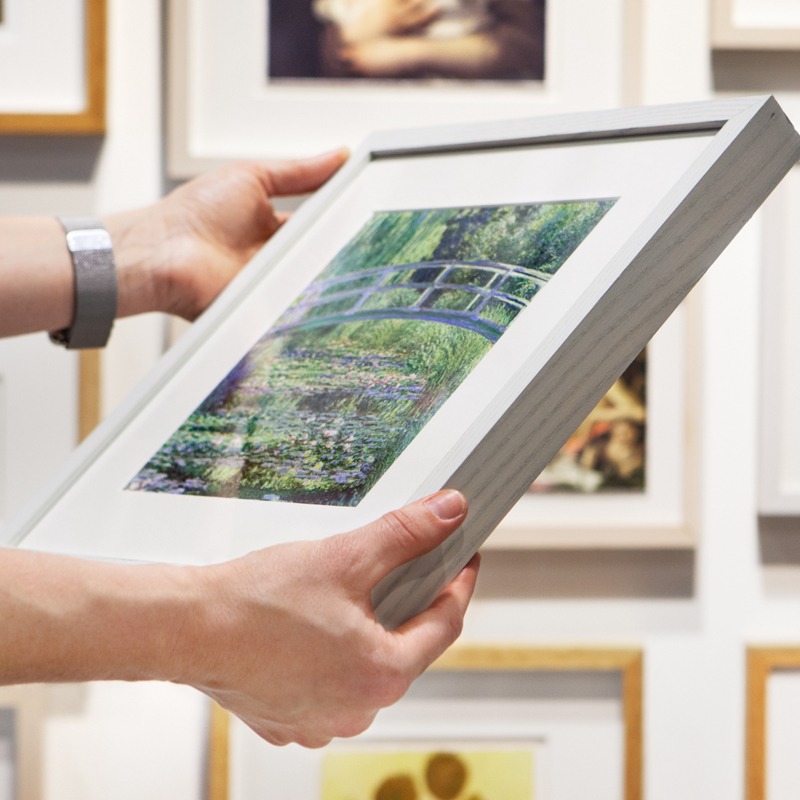Sassetta, 'Saint Francis renounces his Earthly Father', 1437-44
About the work
Overview
Under the arches of a pink arcade, Bishop Guido of Assisi wraps his cloak around the naked Saint Francis of Assisi. The saint’s discarded boots, shirt and hose lie in a heap on the floor. To the left, Francis’s father, enraged by his son’s rejection of their wealthy lifestyle, has snatched up the costly red robe.
This is the second of eight panels from the back of the San Sepolcro Altarpiece, a large and magnificent polyptych (multi-panelled altarpiece) painted for the Franciscan friars of Borgo San Sepolcro; seven of these scenes are in the National Gallery’s collection. This painting originally sat next to one showing Francis giving his clothes to a poor knight. It depicts the next step in the saint’s renunciation of the world, a kind of inverse ‘rags to riches’ story.
Key facts
Details
- Full title
- Saint Francis renounces his Earthly Father
- Artist
- Sassetta
- Artist dates
- active by 1427; died 1450
- Part of the series
- San Sepolcro Altarpiece
- Date made
- 1437-44
- Medium and support
- egg tempera on wood
- Dimensions
- 87.5 × 52.4 cm
- Acquisition credit
- Bought with contributions from the Art Fund, Benjamin Guinness and Lord Bearsted, 1934
- Inventory number
- NG4758
- Location
- Not on display
- Collection
- Main Collection
- Frame
- 21st-century Replica Frame
Provenance
Additional information
Text extracted from the ‘Provenance’ section of the catalogue entry in Dillian Gordon, ‘National Gallery Catalogues: The Fifteenth Century Italian Paintings’, vol. 1, London 2003; for further information, see the full catalogue entry.
Exhibition history
-
2014Building the Picture: Architecture in Italian Renaissance PaintingThe National Gallery (London)30 April 2014 - 21 September 2014
-
2023Saint Francis of AssisiThe National Gallery (London)6 May 2023 - 30 July 2023
Bibliography
-
1935National Gallery, National Gallery and Tate Gallery Directors' Reports, 1934, London 1935
-
1951Davies, Martin, National Gallery Catalogues: The Earlier Italian Schools, London 1951
-
1986Davies, Martin, National Gallery Catalogues: The Earlier Italian Schools, revised edn, London 1986
-
2001
C. Baker and T. Henry, The National Gallery: Complete Illustrated Catalogue, London 2001
-
2003Gordon, Dillian, National Gallery Catalogues: The Fifteenth Century Italian Paintings, 1, London 2003
Frame
This reproduction tabernacle frame was made at the National Gallery for the Saint Francis of Assisi exhibition in 2023. It draws inspiration from the frame on Sassetta’s Pala della Madonna della neve (Galleria degli Uffizi, Florence). Meticulously crafted from poplar wood, it is water-gilt with decorative motifs adorning the pilasters and the predella. Within the gilded Romanesque arched frames, incised trefoils in the spandrels are painted in a blue hue. Doric capitals adorn the frames and, along with the pilasters, are embellished with undulating foliage engraved into the gesso. The predella features sgraffito ornamentation.
Saint Francis renounces his Earthly Father, one of eight panels from the high altarpiece of S. Francesco in Borgo Sansepolcro, Italy, originally formed a double-sided polyptych. Remarkably, all eight panels share a surviving frame, albeit in parts. In 1935 seven of the panels were detached from their original frames and entrusted to the firm G.P. Coulette, which crafted single frames.
About this record
If you know more about this painting or have spotted an error, please contact us. Please note that exhibition histories are listed from 2009 onwards. Bibliographies may not be complete; more comprehensive information is available in the National Gallery Library.
Images
About the series: San Sepolcro Altarpiece
Overview
These paintings were once part of one of the largest and most splendid altarpieces of the early Italian Renaissance. Made up of almost 60 panels, the double-sided altarpiece was painted for the high altar of San Francesco in Borgo San Sepolcro, a town near Arezzo. The back, which was seen primarily by the friars, showed Saint Francis in glory surrounded by eight scenes of his life, seven of which are in the National Gallery’s collection.
Unusually, surviving documents tell us a lot about how it was commissioned, constructed and paid for. The project was begun in 1426 but had foundered, and in September 1437 Sassetta took over. In early 1439 two friars visited him in Siena, bringing the scripta, a document stating what he was to depict. Although they provided the text, the artist provided the imagination: the scripta states that the friars, themselves artisans, and the painter together should decide on the details.









